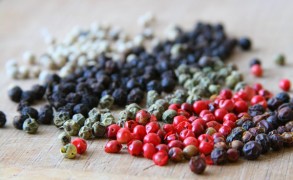Russian Perfumery and Red Moscow
Krasnaya Moskva (Red Moscow) is a heavy carnation based fragrance, with a lemony coriander slicing through the powdery backdrop. The base features an interplay between cool and warm notes. I cannot even review Krasnaya Moskva on its merits alone, because the associations are too strong. The moment I smell it, I am 10 years old again, being lectured on the young pioneer’s creed by some female Communist Party functionary. Since Bolsheviks deemed perfumes as bourgeois extravagance, Krasnaya Moskva is the only Soviet Russian perfume I remember, along with something called Chypre. As a child, I recall buying a bottle for my grandfather, however my grandmother vetoed the present, referring to Chypre as something that alcoholics buy when vodka was out of stock. No wonder, it took me a long time to appreciate chypre fragrances.
Yet, prior to the Russian revolution, perfume production was flourishing, starting with A. Rallet&Co. factory, which was opened in Moscow in the summer of 1843. The perfume factory was eventually headed by Edouard Beaux, a father of Ernest Beaux, a legendary creator of Chanel No.5. No, I am not going to say that Chanel No. 5 is actually a perfume Lenin commissioned while in Finnish exile for his lover Inessa Armand. Ernest Beaux, however, was born in Moscow in 1881, subsequently inheriting his father’s business. After the Russian Revolution of 1917, Beaux escaped and settled in Paris, where most of his famous work has been done. As for A. Rallet&Co. factory, Bolsheviks renamed it Soap and Perfumes Works No.7 in 1918 upon nationalization. The name was changed to Svoboda (Freedom) later.
However, A. Rallet&Co. was not the only important perfume factory in Russia. Henri Brocard was one of the famous European perfumers at the time, with one of his factories based in Moscow. Brocard came to Russia from France in 1861, and it is his factory that purportedly created Krasnaya Moskva fragrance, even though at the time was known as The Empress’s Favorite Bouquet, referring to Tzarina Aleksandra, unfortunate Nicolas II’s wife. In 1918, Brocard’s factory was nationalized and given a typically Soviet no-frills name, Soap and Perfumery Factory No.5. Molotov’s wife, Polina Zhemchuzhina was the factory director until Stalin’s suspicions led to her arrest for treason in 1948. Its current name, Novaya Zarya (New Dawn) was given to the factory in 1922.
Is Krasnaya Moskva really a legendary Brocard’s creation? I have found little information to verify this claim, other than to discover that even if it were made by Brocard’s factory, it must have been after his death. Digging in the past to discover one’s aristocratic origins has become a fashionable thing after the collapse of the Soviet Union. Indeed, if one is to believe everyone who claims to be associated with Romanovs, the royal family would have been the largest one in the history of monarchies, putting European royalty to shame. Therefore, I hold a skeptical view on Krasnaya Moskva’s aristocratic roots.
One thing is certain, however. I will never be able to lose the association between its heady carnation scent and the memories from my childhood. I can envision perfectly its two-toned red box, marked with the Soviet seal of quality. Krasnaya Moskva is still produced by Novaya Zarya, along with a few other fragrances. Recently, I had a chance to sample extrait de parfum, and it was sweeter and heavier on carnation paired with rose than I remember it to be. Listed notes: bergamot, coriander, ylang-ylang, rose, jasmine, iris, vanilla (carnation is definitely there in one form or another). Krasnaya Moskva is still available here, for a very socialist price of $10, for those who would either like to make a trip to the past or to discover Soviet exotics.
Reference: Veniamin Kozharinov, Empress’s Bouquet, or Red Moscow. The Moscow News.
Picture: Red Square, Moscow.

















Aurora in Recommend Me a Perfume : April 2024: I don’t think they differ widely in scent, the EDT is punchier and a bit brighter in the top notes and the EDP clings more to the skin and lasts… April 26, 2024 at 2:27pm